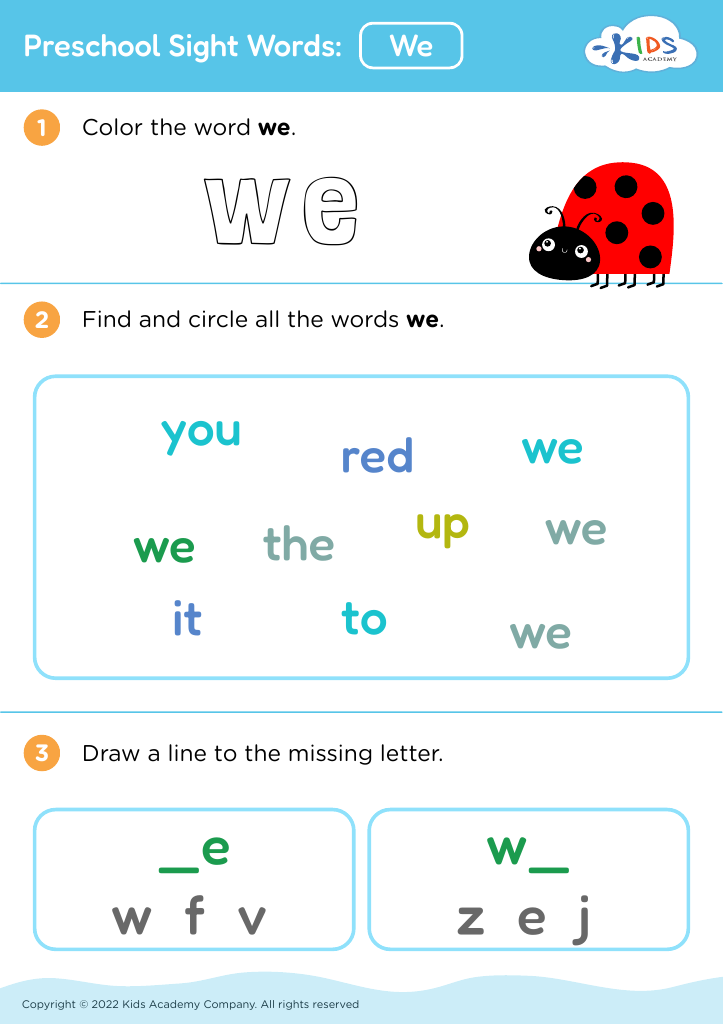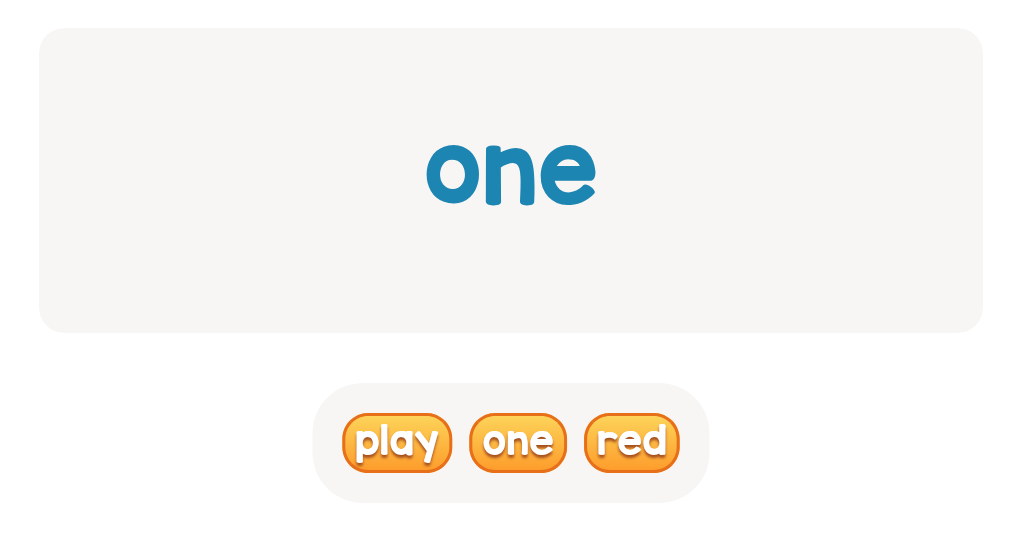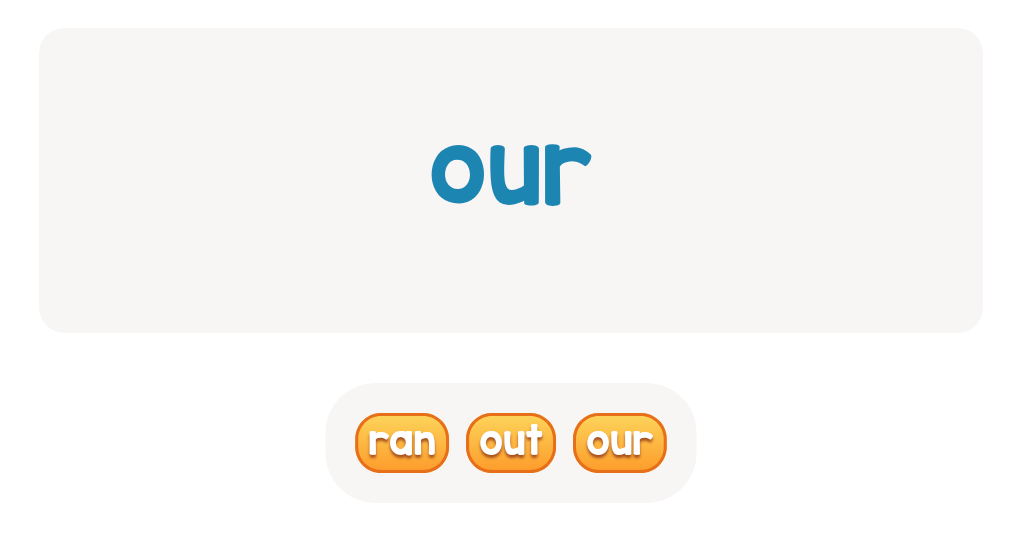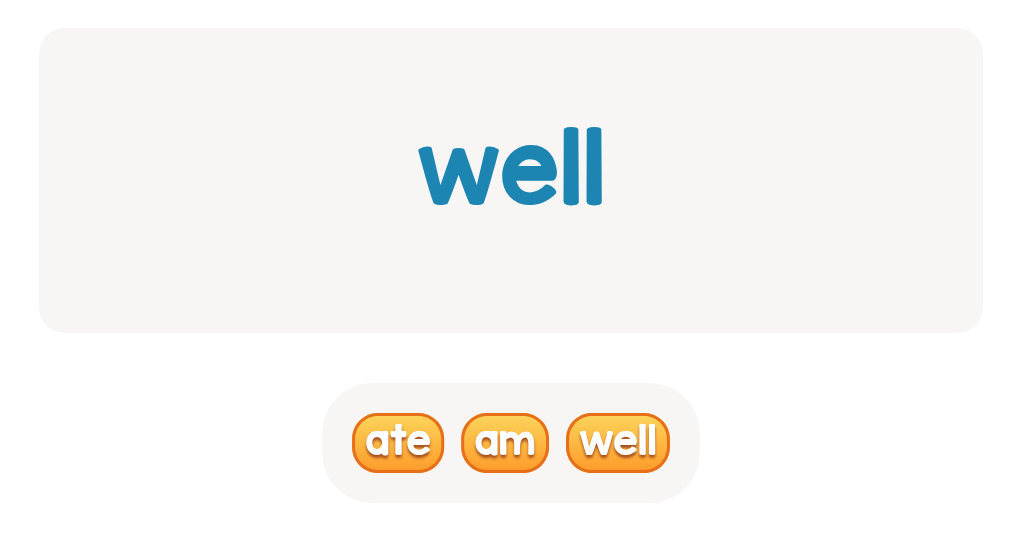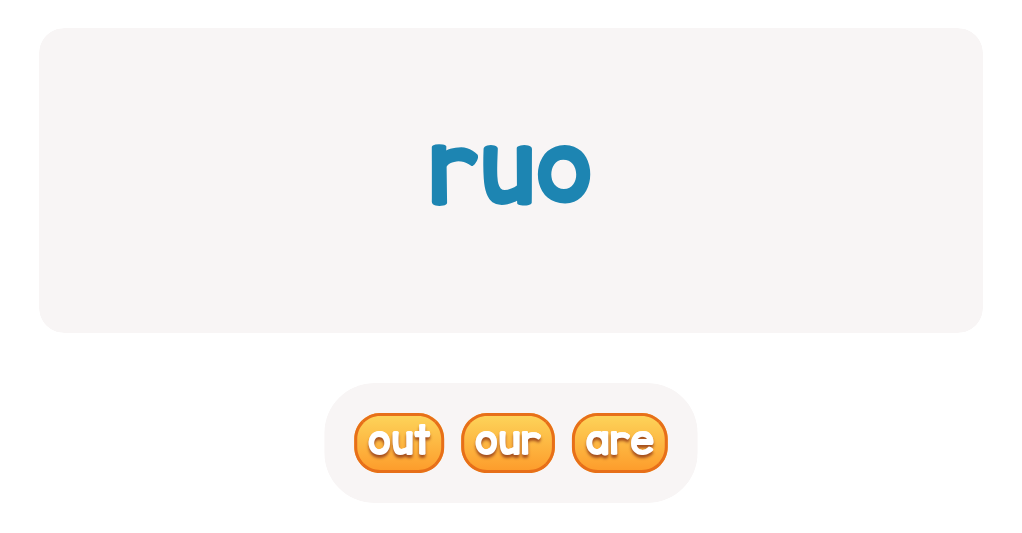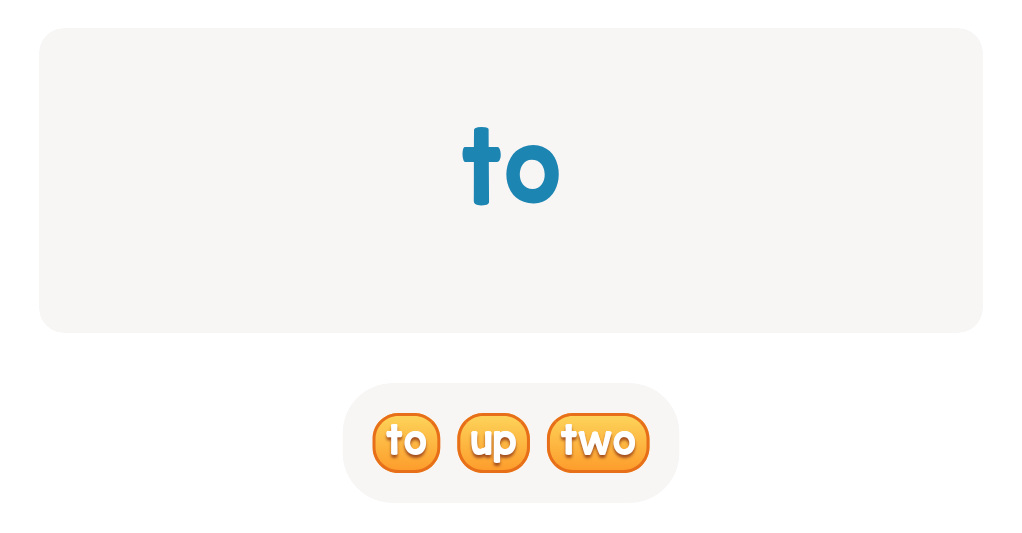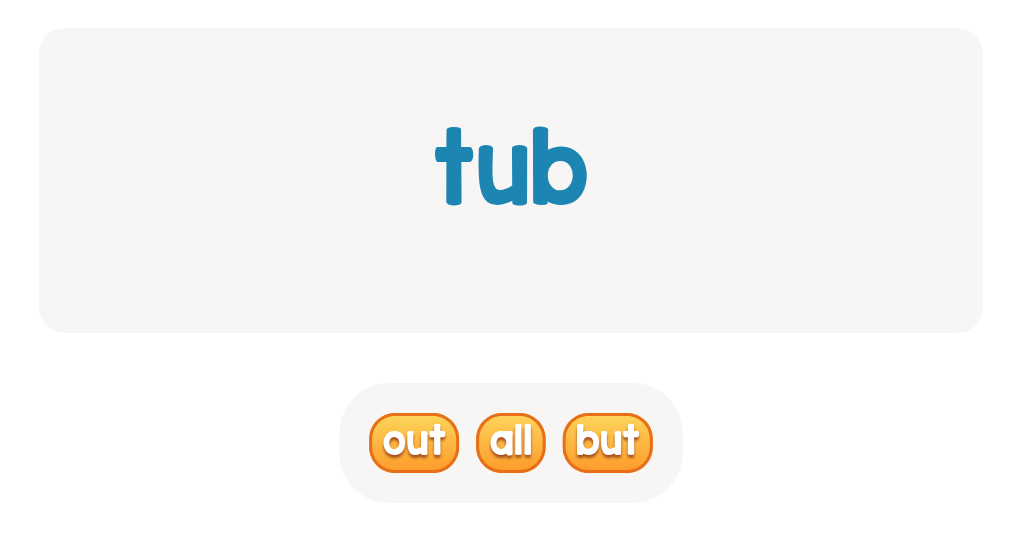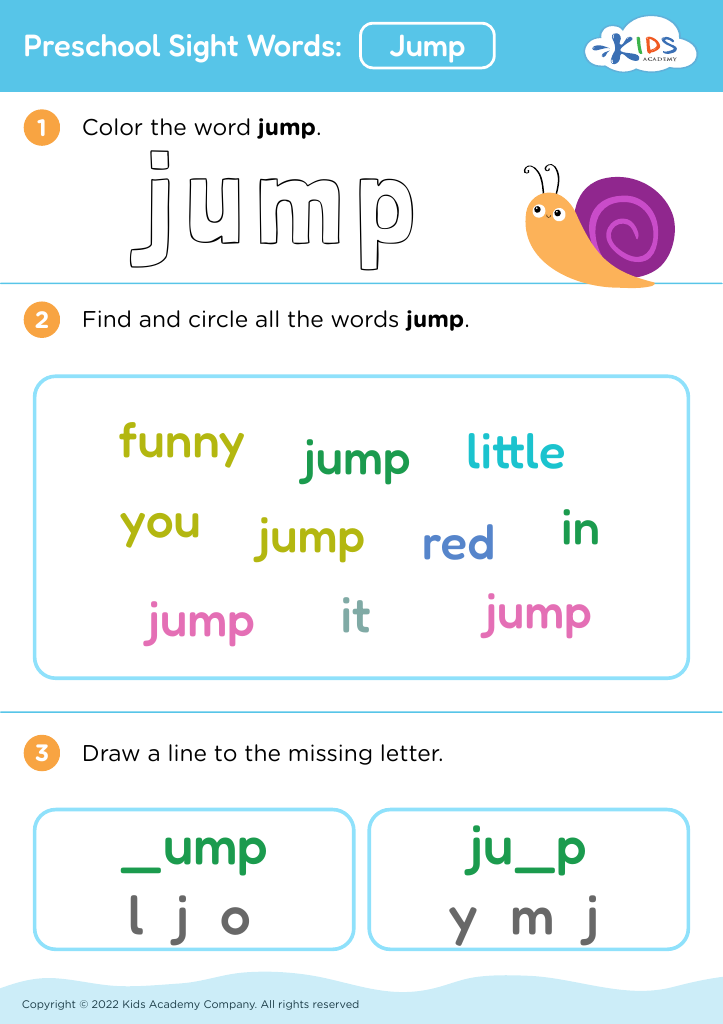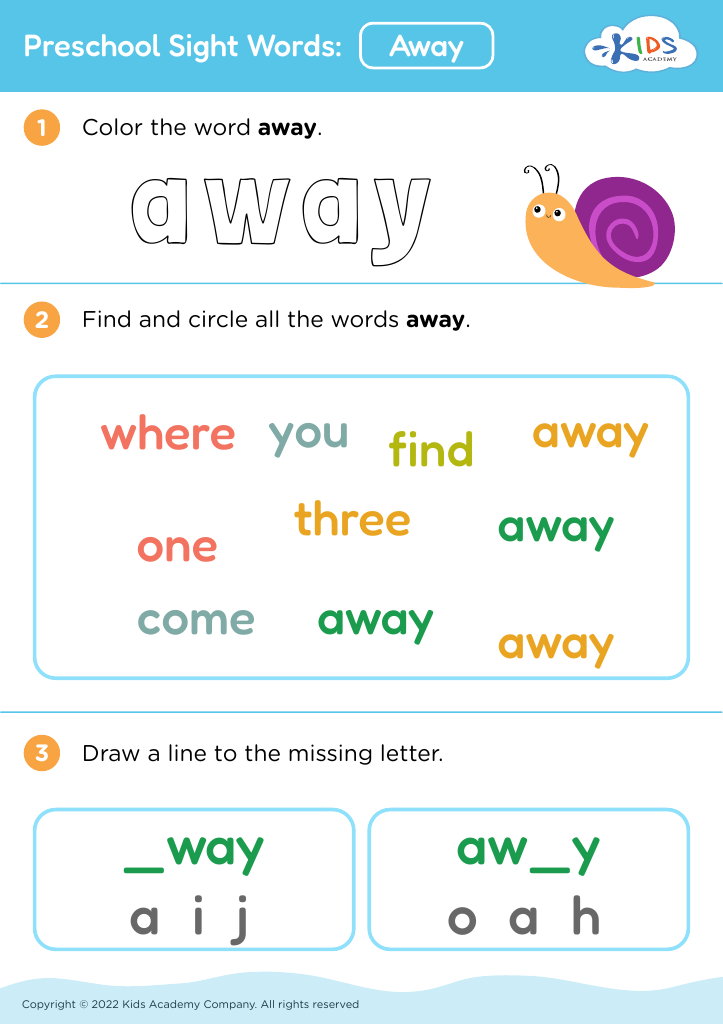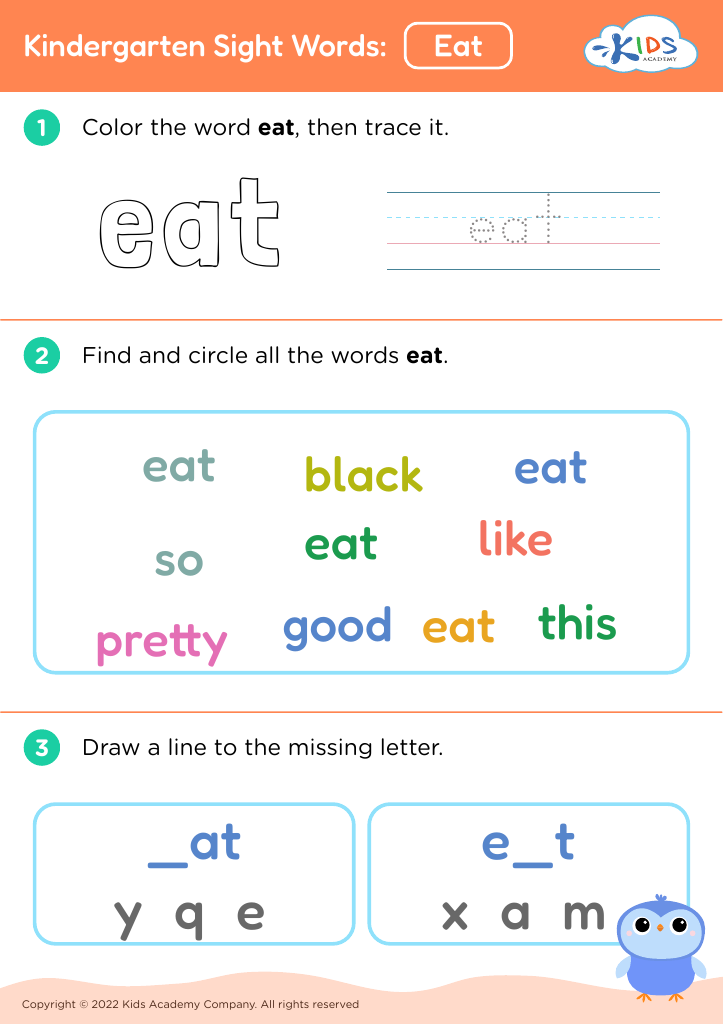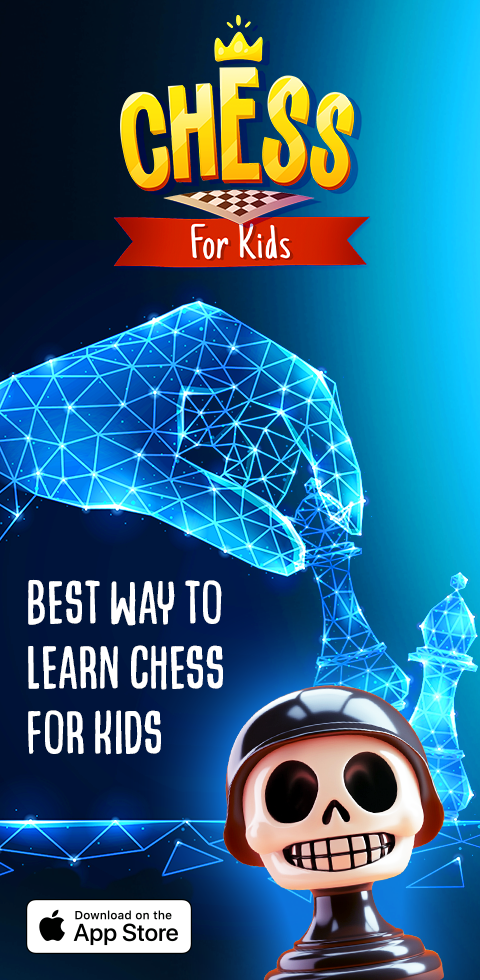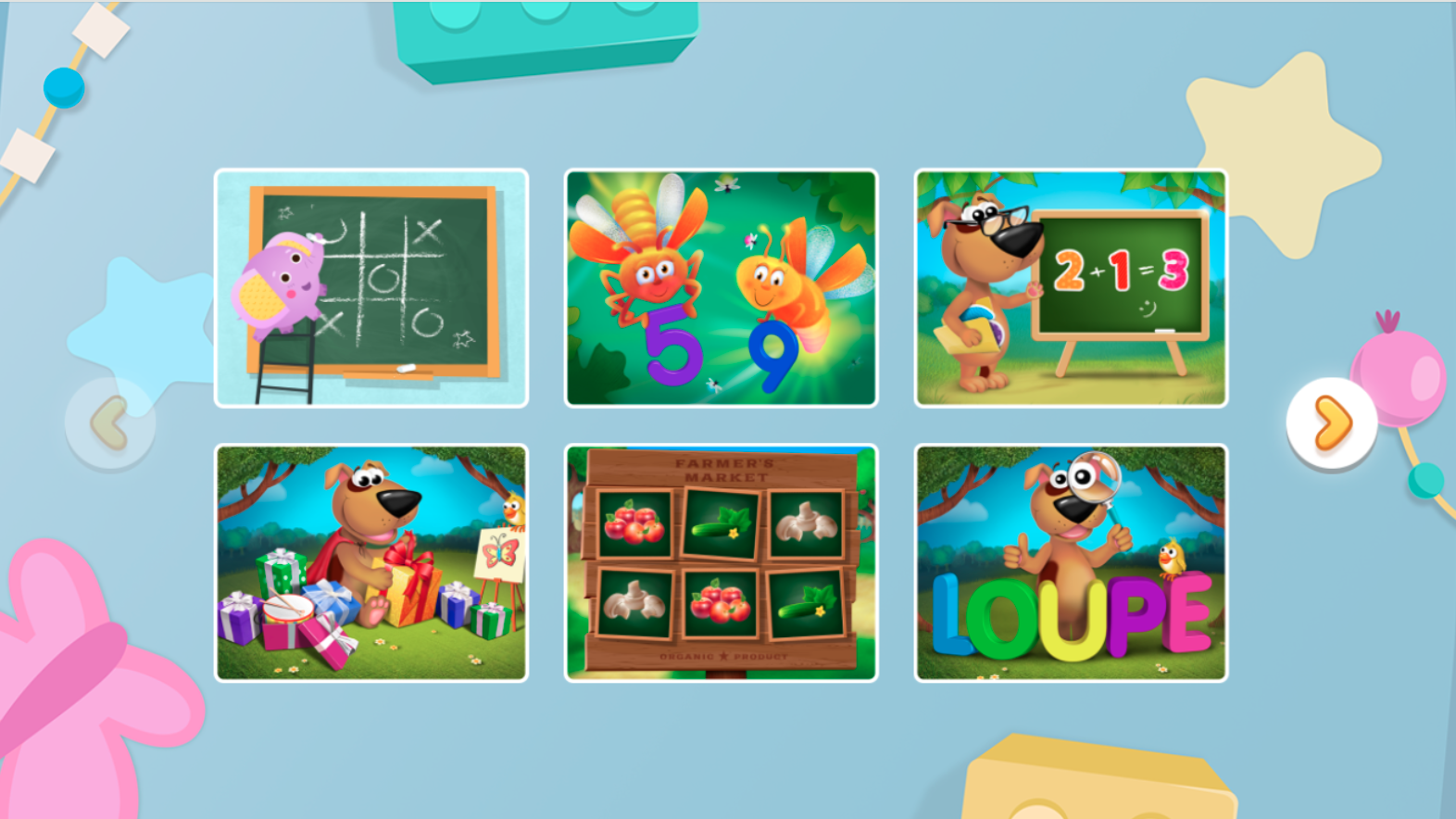Fine Motor Skills Sight Words Worksheets for Ages 4-5
4 filtered results
-
From - To
Enhance your child's early literacy and fine motor skills with our engaging Fine Motor Skills Sight Words Worksheets designed specifically for ages 4-5. These interactive worksheets blend essential sight word recognition with exciting fine motor activities, helping children improve their handwriting, cutting, and coloring abilities as they learn. Each worksheet features visually appealing designs and age-appropriate difficulty, ensuring young learners stay motivated and focused. Supporting both reading and motor skill development, our resources provide a well-rounded approach to early education, making learning both fun and enjoyable. Explore our collection today to support your child's foundational skills and pave the way for their academic success!
Fine motor skills and sight words are critical components of early childhood development for children aged 4-5. Fine motor skills involve the coordination of small muscles in the hands and fingers, enabling children to perform tasks like gripping a pencil, buttoning clothes, or manipulating small objects. These skills set a foundation for writing, drawing, and participating in various activities that require precision. By focusing on fine motor development, parents and teachers enhance children's ability to engage in schoolwork and daily tasks effectively.
Sight words, on the other hand, are commonly used words that children should recognize instantly to help them read fluently and with comprehension. For young learners, recognizing sight words is essential as it aids in word recognition and boosts reading confidence. When parents and teachers prioritize these skills, they lay the groundwork for literacy and academic success.
Combining fine motor skills practice with sight word recognition creates a holistic approach to learning. Engaging activities that incorporate both areas not only make learning enjoyable but also improve cognitive function and promote independence. By investing time and resources into fostering these skills, parents and teachers play a pivotal role in ensuring that children develop essential reading, writing, and coordination abilities that will serve them throughout their educational journey.
